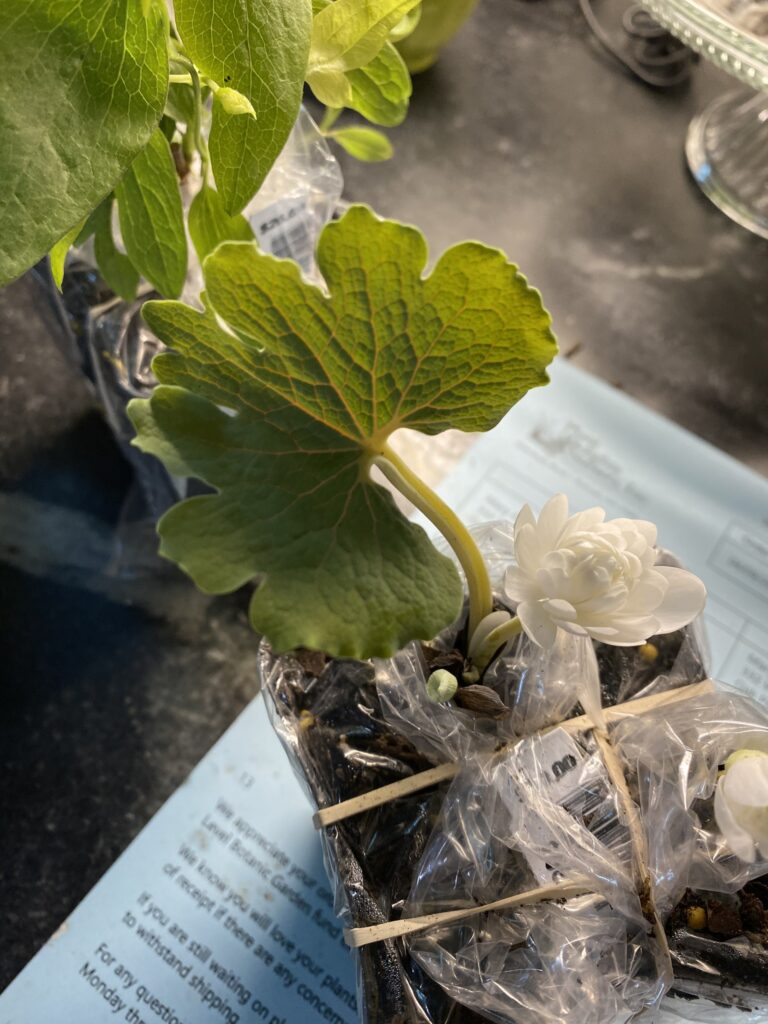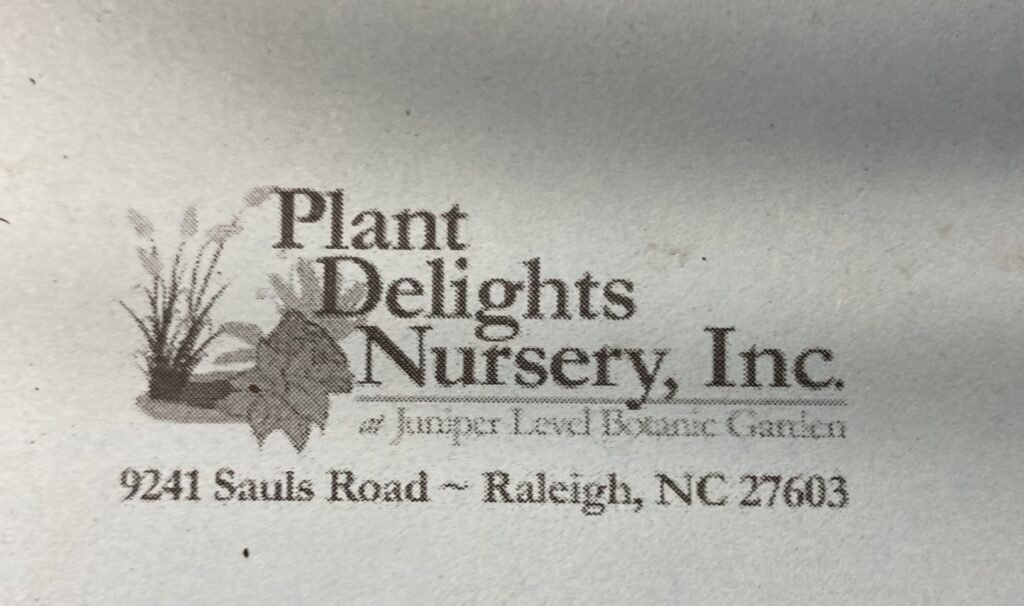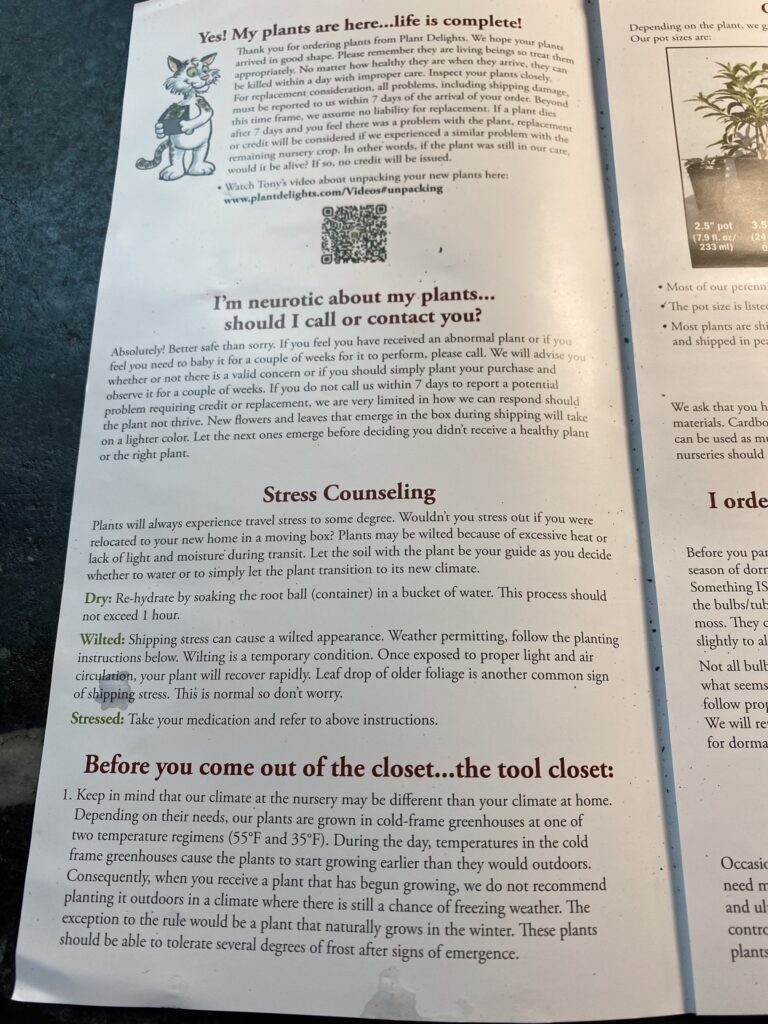I’ve been trying to incorporate more natives in my garden for a while, but it’s not as easy as you might think. For one, a lot of them aren’t carried by local nurseries, and even when you do find them, they’re often a) expensive, b) slow-growing, or c) both.
I suppose that’s not surprising, given part of the problem we’re having is that the plants bred for gardens will often out-compete natives, moving aggressively across the landscape.
Now, if you’ve got the time to invest in a long-developing garden, you can certainly buy small, inexpensive native plants (or even start from seeds), and just wait for them to fill in.
Sometimes I get impatient, though. This year, I splurged on a few double bloodroots ($30 each, plus shipping, oof!), one of my favorite Illinois natives, and they arrived today, so I’ve just put them in the ground. They’re from a new-to-me nursery, Plant Delights, which seems to be as much a botanical research site as a sell-to-the-public site. All my plants arrived healthy and in good condition, along with an informative and mildly amusing guide to their care.
So, recommended, I think, if you want to throw a little money at the native plant problem.
And on the plus side, once your plants do get established, you can, if you like, divide them and give them away to your neighbors, making native plants more available and accessible to the community. My first double bloodroot was a gift from a neighbor — now I’m hooked! In about 3-5 years, I should have established colonies ready to divide and share, fingers crossed!
*****
Here’s a little more about double bloodroot: “Sanguinaria canadensis is a herbaceous perennial native to eastern North America including southern parts of Manitoba, Ontario, Quebec and the Atlantic Provinces.
The Multiplex form is a mutant discovered near Dayton Ohio in 1916 by an amateur botanist Mr. Guido von Webern who had a love of nature and a perceptive eye. The Multiplex form is a sterile plant that cannot set seed as all stamens and even the carpals are transformed into petals. Because this plant does not set seed, the individual blooms will last much longer (up to a week or more) than the blooms on the native single form of bloodroot that drop their petals as soon as the bloom has been fertilized.
Propagation of this plant is only accomplished by vegetative cuttings….”
Read more here: http://arcadiandaylilies.com/DoubleBloodroot.html



